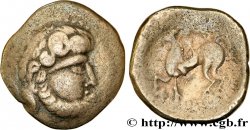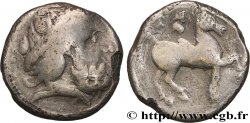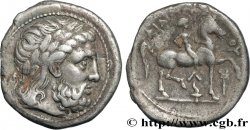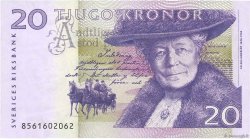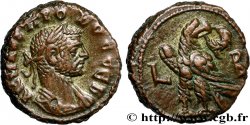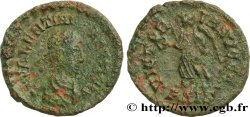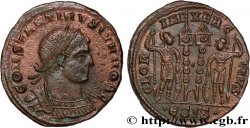v61_0399 - CELTI DEL DANUVIO Tétradrachme “au cavalier et au triskèle”
MONNAIES 61 (2014)
Начальная цена : 420.00 €
Назначить цену : 600.00 €
Цена реализации : 420.00 €
Количество ставок : 1
Максимальная предлагаемая цена : 450.00 €
Начальная цена : 420.00 €
Назначить цену : 600.00 €
Цена реализации : 420.00 €
Количество ставок : 1
Максимальная предлагаемая цена : 450.00 €
Тип Tétradrachme “au cavalier et au triskèle”
Дата: c. IIe-Ier siècles AC.
Металл: silver
Диаметр: 25 mm
Ориентация осей монеты: 3 h.
Вес: 11,12 g.
Редкость: R3
Комментарии о состоянии
Très belle monnaie pour ce monnayage rare. Les types sont complets, avec un droit légèrement décentré et un beau revers idéalement centré. Patine de collection ancienne
Происхождение:
Cet exemplaire provient d’une collection dispersée par Künker
Лицевая сторона
Аверс: легенда: ANÉPIGRAPHE.
Аверс: описание: Tête stylisée et barbue de Zeus à gauche, la chevelure laurée et décomposée en petites mèches ; grènetis circulaire.
Обратная сторона
Реверс: легенда: ANÉPIGRAPHE.
Реверс: Описание: Cavalier casqué au pas à gauche ; ligne d’exergue perlée ; un V, un Pi et un triskèle entre les jambes du cheval.








 Cообщить об ошибке
Cообщить об ошибке Распечатать страницу
Распечатать страницу Отправить мой выбор
Отправить мой выбор Задать вопрос
Задать вопрос Consign / sell
Consign / sell
 Информация
Информация

